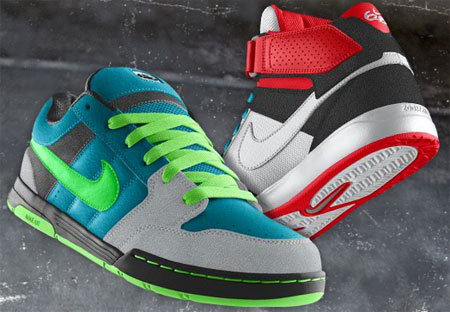By
Reuters
Reuters
Published
Dec 3, 2010
Dec 3, 2010
Nike shares environmental scoring tool for product design
By
Reuters
Reuters
Published
Dec 3, 2010
Dec 3, 2010
Dec 2 - Nike has released a public version of a design tool it created to help its designers make better-informed decisions in the earliest stages of making products.
 Nike iD's |
The Environmental Apparel Design Tool gives each design an overall score, and designers can then tweak the specifics of their work to improve the score.
Nike said the tool was built over seven years at a cost of $6 million, and it's guided choices for Nike products, like the jerseys it made for some countries in the 2010 World Cup.
Now that Nike's been using it and found it beneficial, it's releasing the tool for anyone to use and build upon. "We needed to make sure it was useful and was reducing our impacts," said Lorrie Vogel, general manager for Nike's Considered program.
The Considered program is the company's effort to rethink products by making them with more environmentally-preferred materials and fewer toxins while producing less waste. With the goal of integrating its Considered principles into all its products over the coming decade, the company has released more and more products with recycled content, safer adhesives, and more-efficient designs over the past few years.
To use the one-screen Environmental Apparel Design Tool tool, designers plug in what materials they're using, how much recycled or organic content they have, any treatments being done, how much waste will be left over from cutting the design out, and some other details, and the tool gives the design a score, which can fall in the categories of "needs improvement," "good," "better," or "best."
The intent is for designers to use the tool as early as possible in the design process, so they can see which materials have fewer environmental impacts than others, make changes to designs to reduce waste or choose different finishings.
"We designed this tool specifically to give them feedback right away," Vogel said.
In Nike's internal version of the tool, there are baseline scores built in, so designers see how their work compares to the direction the company wants to go. It also shows which materials would have been better choices, so designers can either switch to them or remember them for future products.
The overall score is mainly based on the life cycle analysis of the materials (provided by consulting firm Brown and Wilmanns Environmental). That's how recycled polyester is one of the best choices in the tool, because of its lower life cycle carbon dioxide emissions, no new toxins, landfill waste reduction and other pluses.
That led Nike to use recycled plastic bottles to make jerseys for the 2010 World Cup, using 13 million bottles. Nike has doubled its overall use of recycled polyester in the last year, using 82 million plastic bottles.
But even though recycled polyester is a high-scoring material, it's not exactly the most sustainable, or possible, material for the entire apparel industry to start moving to, since Nike figured out that if all apparel companies switched one-third of their polyester products to recycled polyester, the demand for that material would exceed how many plastic bottles are made every year.
Next year Nike will release public versions of other tools it uses: the Footwear Design tool (like the Environmental Apparel Design Tool, but geared toward specific concerns with shoes), the Material Assessment Tool (which just scores individual materials) and the Water Assessment Tool (which Nike uses for scoring drying and finishing facilities).
By Jonathan Bardelline at Greener World Media
© Thomson Reuters 2024 All rights reserved.

























